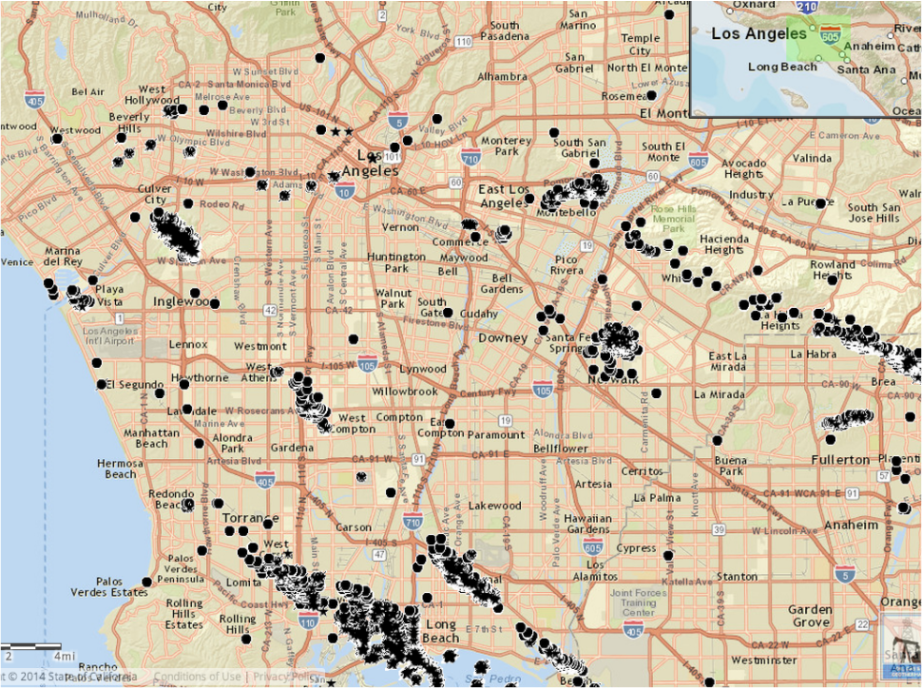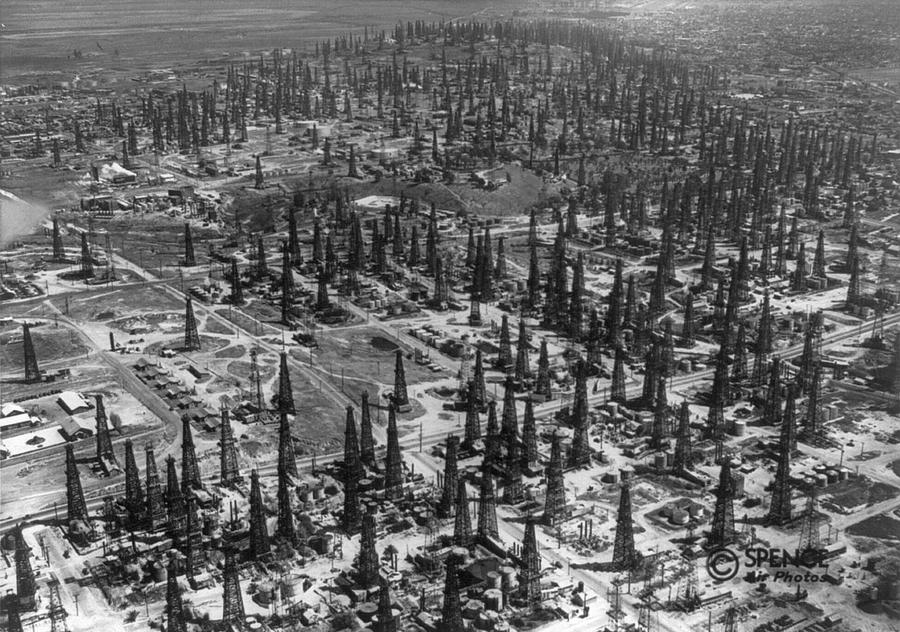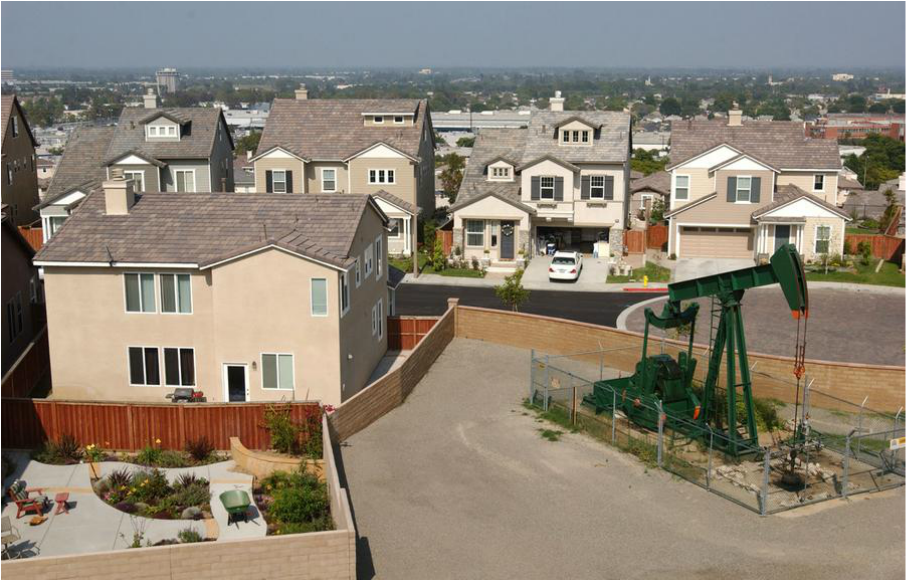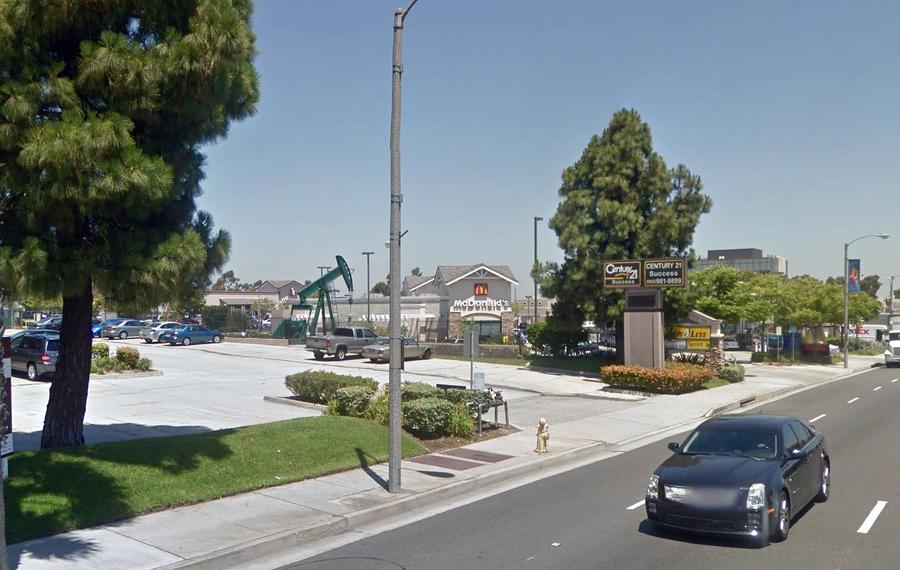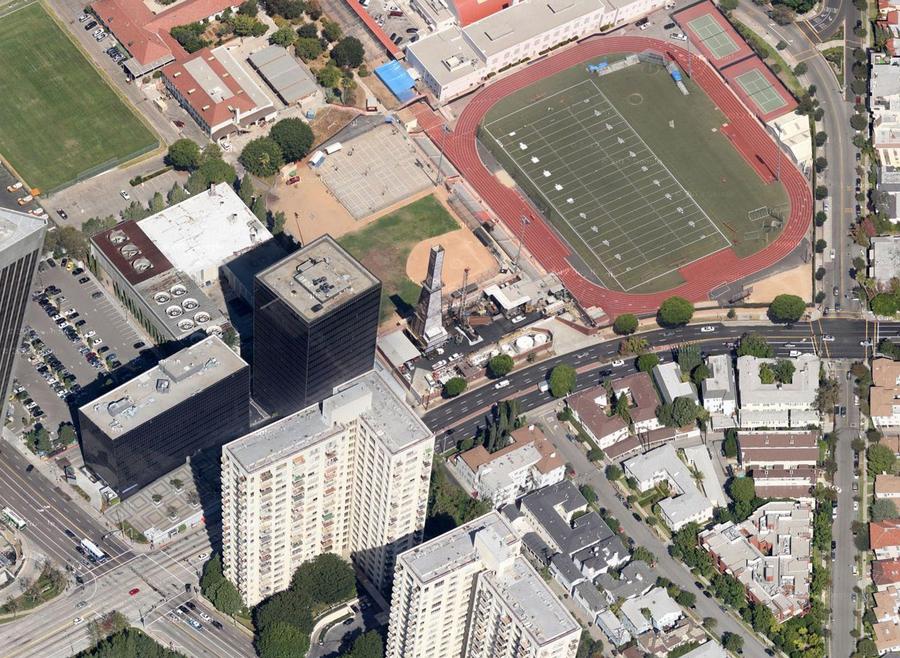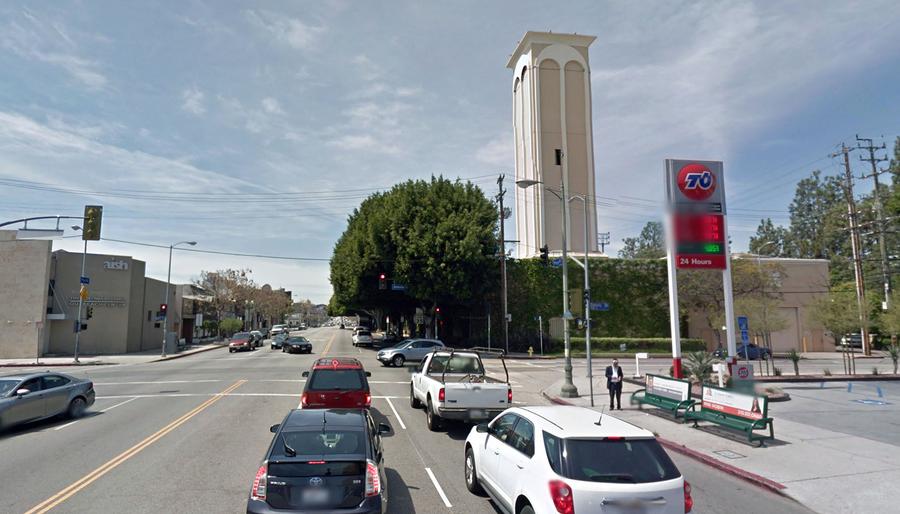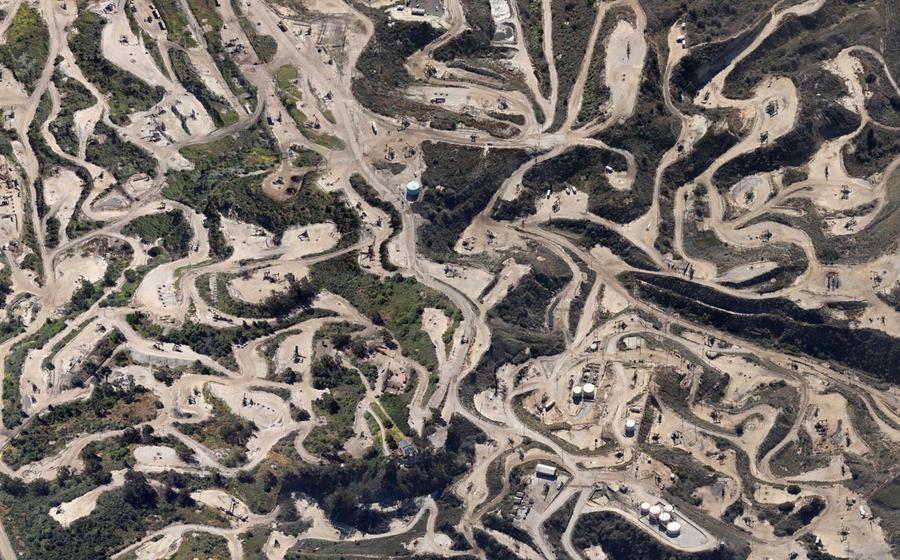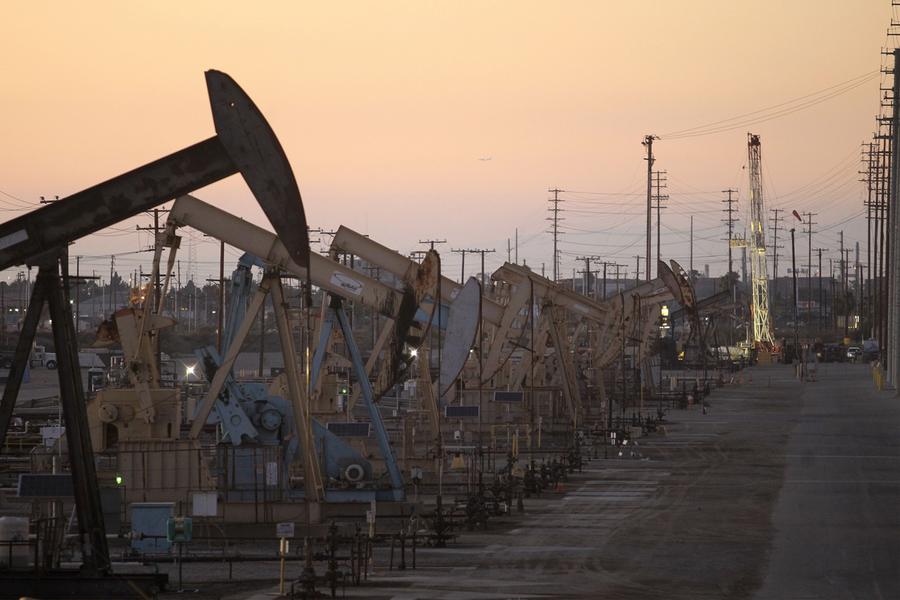A History of Neighborhood Drilling
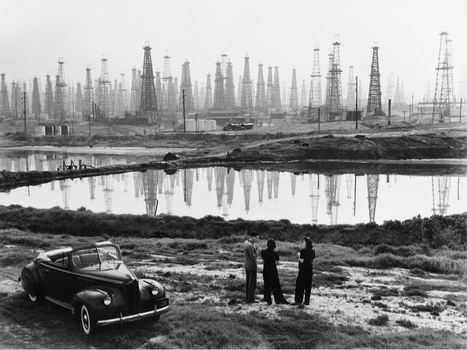 Oil field in Signal Hill, CA, 1941. Courtesy of National Geographic.
Oil field in Signal Hill, CA, 1941. Courtesy of National Geographic.
Oil extraction is a dark remnant of the early days of L.A.’s growth.
The fossil fuel industry played a huge role in Los Angeles’ early development, when oil was easy to access and there was a distinct separation between oil producing zones and residential neighborhoods. In the 1890s, the small town of Los Angeles (population 50,000) discovered some of the most productive oil fields in history. By 1930, California was producing nearly one quarter of the world's oil output, and its population had grown to 1.2 million.
This was the wild west of oil extraction, with an abundance of easily accessible oil, minimal regulation, and no understanding of the health or environmental impacts to create a true free-for-all. Los Angeles remains the largest urban oil field in the country. Thousands of active oil wells in the greater L.A. area are located amongst a dense population of more than 10 million people.
Though conventional oil reserves have dwindled, oil drilling in L.A. still remains pervasive. Oil rigs dot the city but are often hidden from sight through the use of tall fences, clandestine structures or by drilling in Los Angeles’ often overlooked low-income neighborhoods.
The fossil fuel industry played a huge role in Los Angeles’ early development, when oil was easy to access and there was a distinct separation between oil producing zones and residential neighborhoods. In the 1890s, the small town of Los Angeles (population 50,000) discovered some of the most productive oil fields in history. By 1930, California was producing nearly one quarter of the world's oil output, and its population had grown to 1.2 million.
This was the wild west of oil extraction, with an abundance of easily accessible oil, minimal regulation, and no understanding of the health or environmental impacts to create a true free-for-all. Los Angeles remains the largest urban oil field in the country. Thousands of active oil wells in the greater L.A. area are located amongst a dense population of more than 10 million people.
Though conventional oil reserves have dwindled, oil drilling in L.A. still remains pervasive. Oil rigs dot the city but are often hidden from sight through the use of tall fences, clandestine structures or by drilling in Los Angeles’ often overlooked low-income neighborhoods.
 Basketball court in front of a disguised derrick in Beverly Hills, CA. (Source: Sarah Craig, Faces of Fracking)
Basketball court in front of a disguised derrick in Beverly Hills, CA. (Source: Sarah Craig, Faces of Fracking)
OVER 3.8 MILLION ANGELENOS
currently live
less than a quarter mile
from an active or idle oil well.
These individuals have no control over what oil-related activities take place in their neighborhoods, including tanker truck traffic, use of chemicals and acids for drilling and the release of pollutants into the air. When the zoning code that addresses oil exploration was developed in the 1960’s, seatbelt laws hadn’t been implemented, smoking on planes was allowed and our nation’s landmark environmental laws had yet to be developed.
As the supply of easily accessible fossil fuel in Los Angeles dwindles, drillers increasingly resort to extreme and dangerous methods to extract oil, even in residential neighborhoods. And as the new extraction technologies become increasingly extreme and secretive, regulators have been unable to monitor or even track what is happening in the middle of Los Angeles communities. We currently have no means of comprehensively tracking oil related activity in Los Angeles, leaving residents in the dark about industrial activity taking place near their homes.
The existence of oil facilities near residential land uses is both a historical accident and a zoning failure, but it is not safe, prudent or reasonable.
This photo essay from The Atlantic helps illustrate the extent of oil exploration in Los Angeles – then and now.
